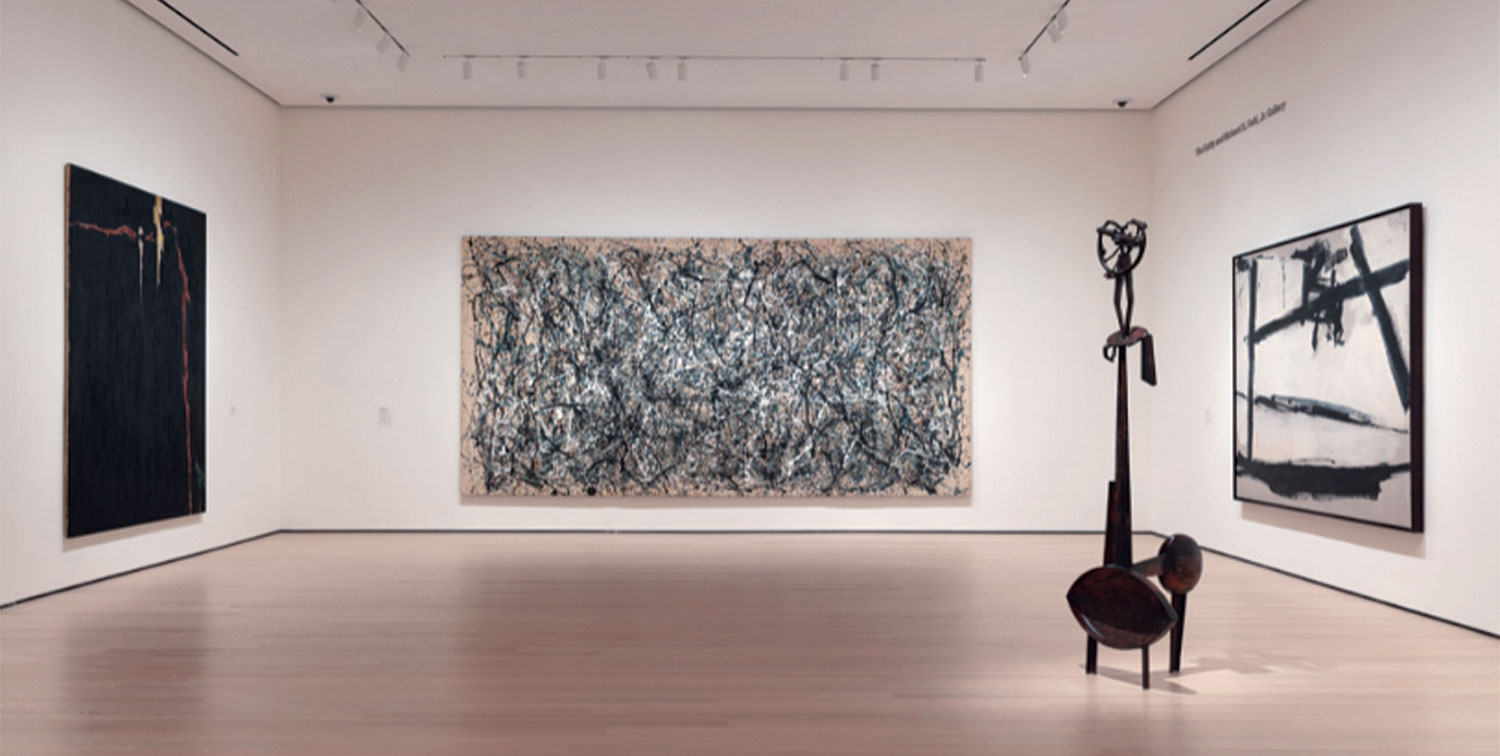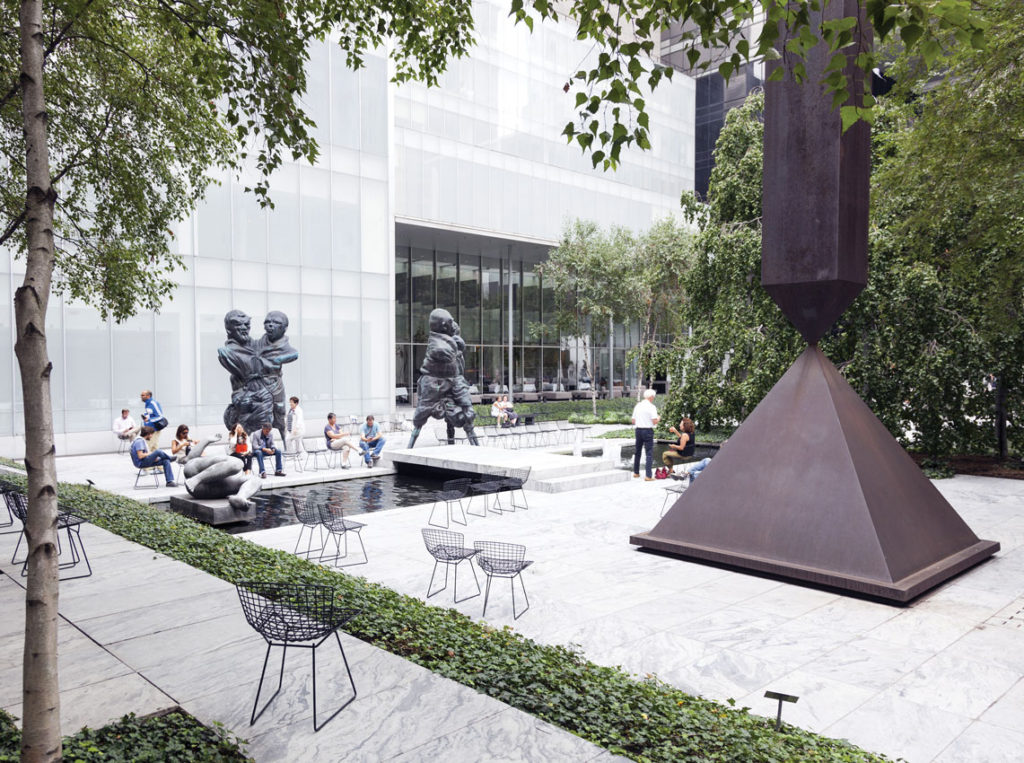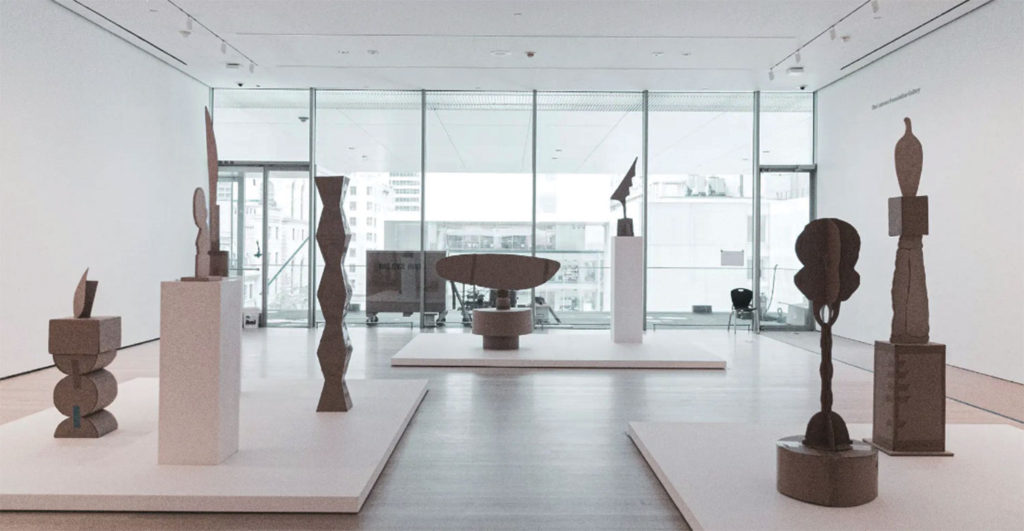
NATALIE GREENBERG
THERE IS NO BETTER WAY TO SPEND A COLD AFTERNOON THAN VISITING A MUSEUM, AND WE ARE SO FORTUNATE AS NEW YORKERS TO HAVE SEVERAL WORLD-CLASS MUSEUMS IN OUR CITY! IF YOU WANT TO SEE MODERN ART, THE BEST MUSEUM TO VISIT IS MOMA—THE MUSEUM OF MODERN ART, LOCATED IN THE HEART OF MIDTOWN MANHATTAN AT 11 WEST 53RD STREET.
MoMA concentrates its collection on only modern and contemporary art, from the 1870’s until the present. You will not find any Renaissance or Old Master paintings there.
In the middle of the 19th century, artists began to move away from the subjects of religion, history and mythology and began to paint what they saw in everyday life, especially scenes of how middle class Parisians spent their leisure time. This may seem mundane to us, but it was quite radical at the time, and crowds would flock to the exhibits to poke fun at and critique this new type of art. Realism (1860s) and Impressionism (1870s) were revolutionary to the development of modern art, and much of what we love about modern and contemporary art is looked at through the lens of these two movements.
MoMA begins its permanent collection with French Impressionism and Post-Impressionism (1870-1880’s) and that is how I would suggest you begin your visit to MoMA.Take the elevator to the fifth floor to begin your journey through modern art.
Before you enter through the doors, you will see a group of sculptures by artist Constantin Brancusi (Gallery 500). Brancusi’s simplified forms are fun to look at, especially for kids. Try to guess what he was sculpting before you look at the wall text. The simplified forms push towards abstraction and this gallery sets up the visitor for what they will see next. Abstraction is the absence of any representation of form. In modern art, much of the earlier artwork still has forms we can understand until there is a point where artists stopped thinking that representational forms needed to be there to understand the art. As you move through the museum, try to look for the point where true abstraction began.
In the first gallery (gallery 501), you will begin with the Post-Impresionists; Seurat, Van Gogh and Cezanne. These painters worked in the 1880’s and were interested in painting in a new way. Their techniques are all quite different than their predecessors.
Look at Seurat’s brushstrokes. He took a scientific approach to painting, and used a system of dots. When looking at his paintings very closely the colors are broken up, but when viewed from a distance they appear to show shading and shadowing. This is similar to the contemporary idea of pixilation.
Don’t miss Vincent Van Gogh’s Starry Night. There is usually a crowd of people around it. If you can get close to the painting, note the thickness and the expressionist movement in Van Gogh’s brushstrokes. This was painted while Van Gogh was spending time at an asylum. He woke up early, looked out his window and this is what he saw. You can almost feel his emotion while looking at this wondrous scene of nature, with it’s swirling stars and cypress trees moving in the wind.
Walk through to the other galleries. MoMA used to arrange their artworks in chronological order with the earliest ones displayed first, but recently they have added more contemporary works sprinkled among the older ones.
Stop in the gallery displaying works by Picasso (gallery 503) and look at his masterpiece Demoiselles de Avignon. Picasso was 25 years old when he painted this groundbreaking work of art. This painting makes a radical break from traditional composition and perspective in painting. It depicts five women composed of flat, splintered planes whose faces were inspired by Iberian sculpture and African masks. Many consider this painting the beginning of the cubist movement and one of the most important contributions to modern art.



As you continue to move through the fifth floor, take in the paintings of other modern masters; of particular note (gallery 506) Henri Matisse. Matisse used color to push his idea of modern art. Look at The Red Studio, where he paints his work-space filled with paintings and sculptures. He uses color, not perspective to show us his studio.
Keep going until you reach gallery 517. This room is filled with Surrealist works. Surrealism is based on the idea of dreams and psychology. Many of the works are dreamlike, eerie or nightmarish. Look for the tiny masterpiece by Surrealist artist Salvador Dali, The Persistence of Memory. Many of you might be familiar with this dreamscape of melting clocks and decaying forms. Time is the subject here, and in this painting Dali is grappling with time, death and decay.
Do not miss Gallery 515 with Claude Monet’s Water Lillies! This entire room contains only the 3-panel triptych, Water Lillies, which is a beautiful example of French Impressionism. Monet and his fellow Impressionists wanted to be able to paint the effects of air and light. This was painted late in Monet’s life, when his eyesight was failing. The paintings are inspired by Monet’s gardens in Giverny. At the center of this composition there is a pool of greens and blues with lilies blooming. There are areas of sky, clouds, water and flowers. The entire composition is very close to abstraction and leaves the viewer with the feeling of being totally immersed in the garden.
At this point in your tour, you might feel that you are completely saturated with modern art, so perhaps it is time for a break. A wonderful place to sit is the Abby Aldrich Rockefeller Sculpture Garden.
The entire museum, newly renovated, is in itself a work of modern architecture. The sculpture garden is a lovely place to contemplate the juxtaposition of modern sculpture and the busy city. You can relax here and decide what you would like to view next. Do you want to see artist’s works from the 1940s to 1970s, such as Jackson Pollock, Mark Rothko and Andy Warhol or would you prefer to see some of the architecture and design exhibits? Perhaps you would be interested in some modern photography exhibits? These are all part of MoMA’s permanent collection.
MoMA always has some temporary exhibits on display, and it is usually worthwhile to check those out as well. Currently there is a show called Automania, which is great for kids! Automania brings together cars, car parts, models drawings and films dedicated to the automobile. In keeping with the MoMA theme, the show addresses the automobile’s impact on design in America.
It is best to secure your ticket to MoMA ahead of your arrival with a timed ticket, so you should check their website for advanced ticket sales.
Enjoy your visit to MoMA!
Natalie Senior Greenberg is a Brooklyn College Art History professor, and the founder, curator and owner of an online art gallery.



